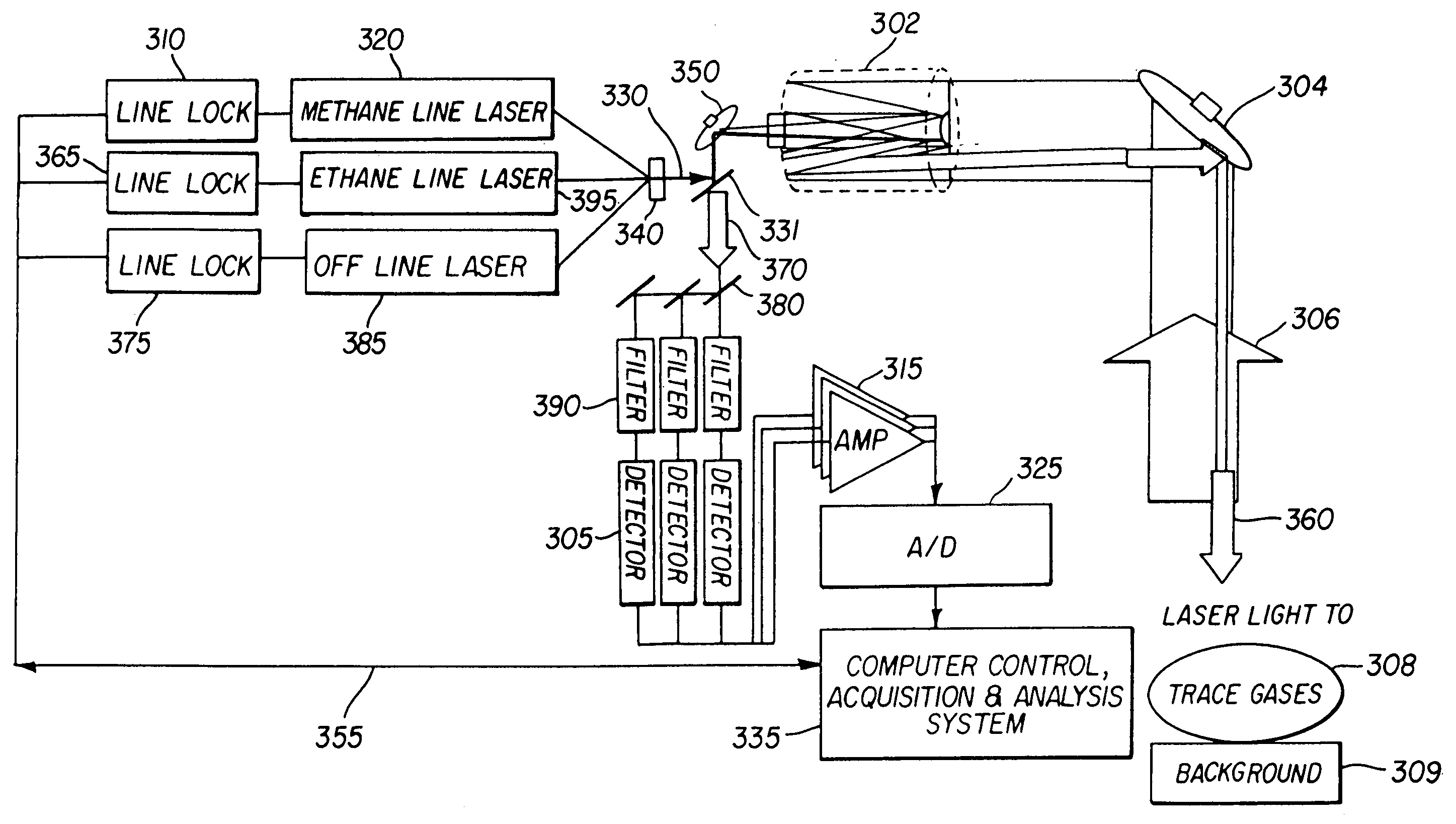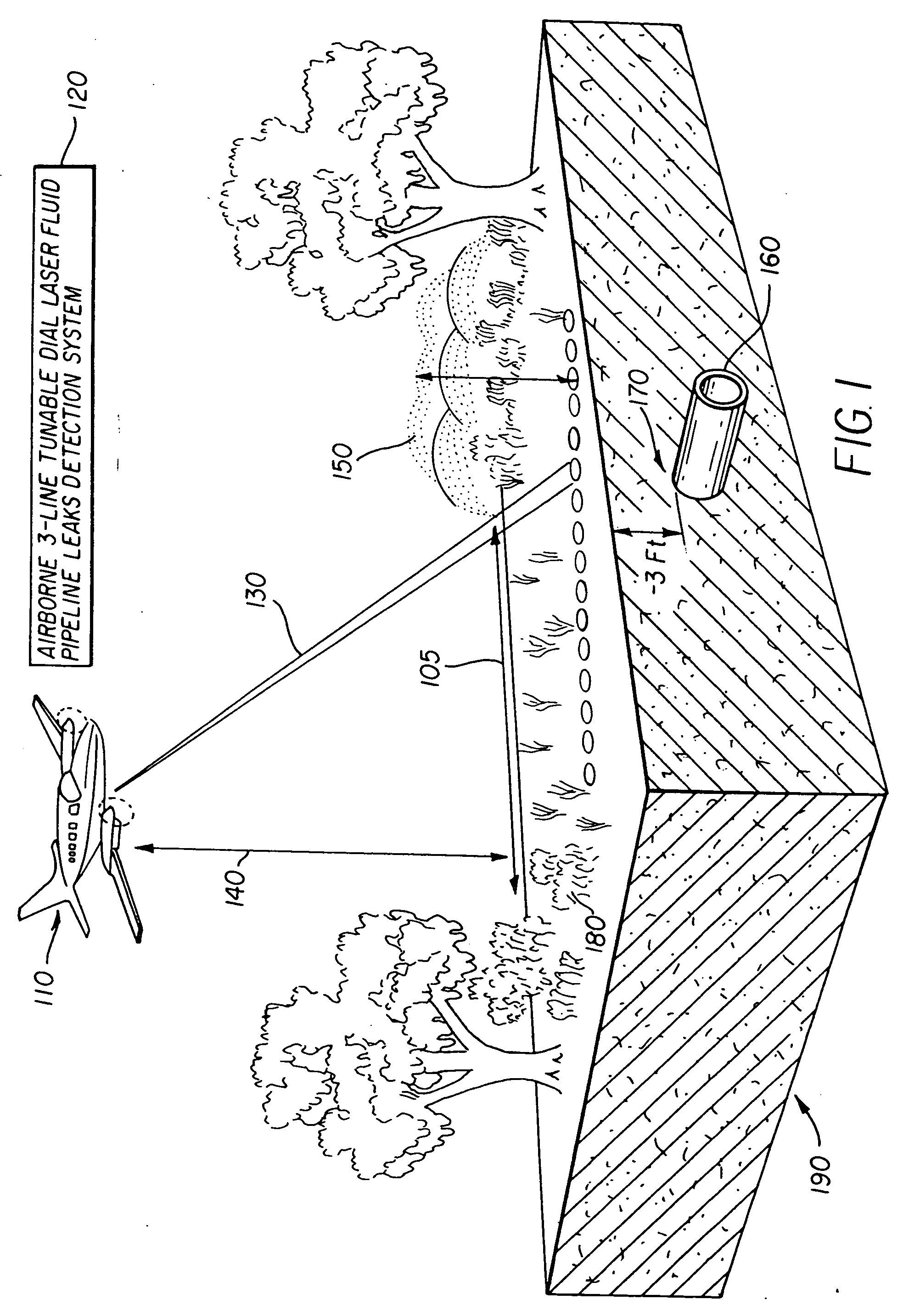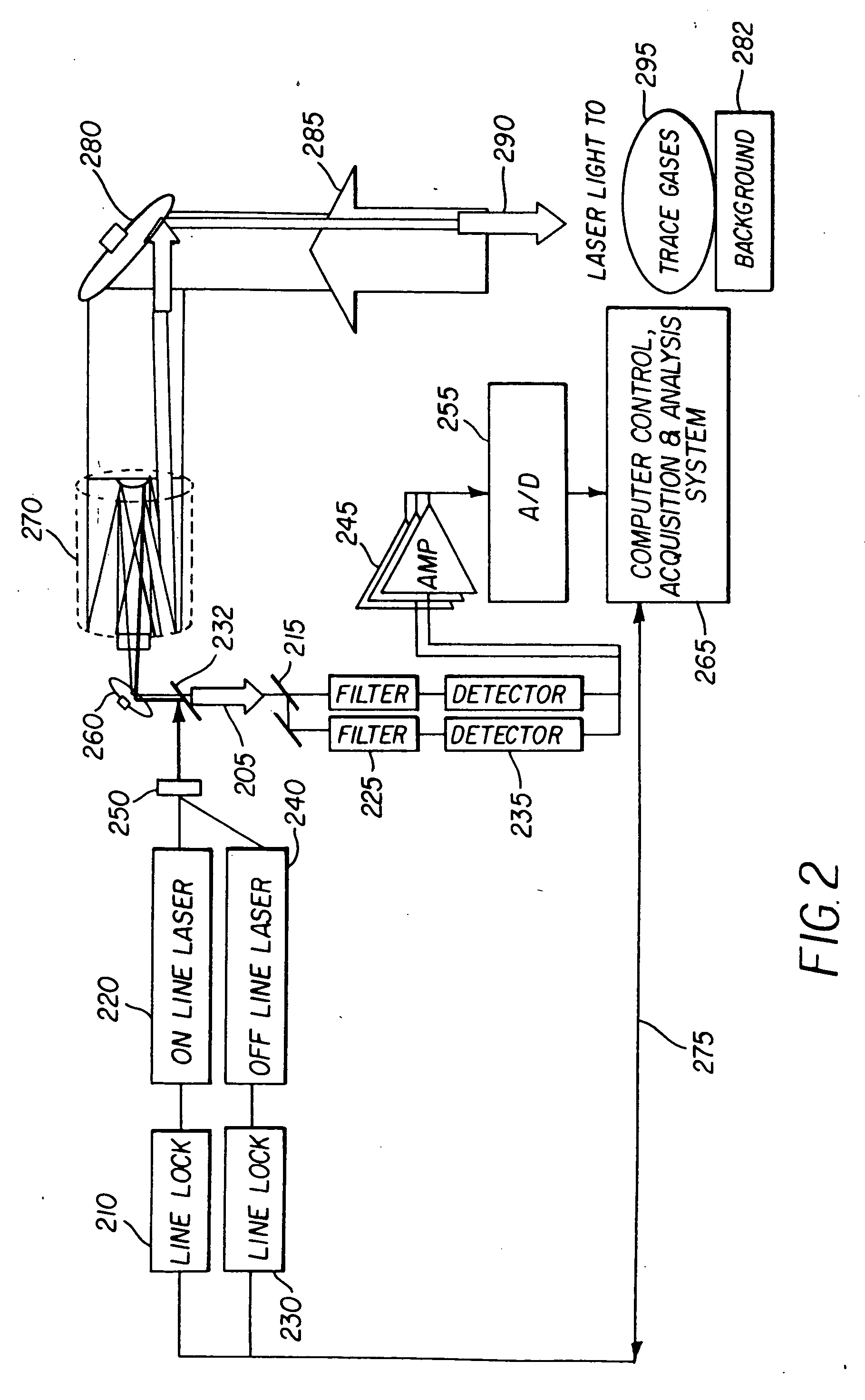System and method for remote quantitative detection of fluid leaks from a natural gas or oil pipeline
a pipeline and fluid leak technology, applied in the field of spectroscopic analysis, can solve the problems of inability to make a direct visual assessment of pipeline failures, failures in pipelines, and continuous inability of lasers to be tunable, and achieve the effect of reasonable wavelength conversion efficiency
- Summary
- Abstract
- Description
- Claims
- Application Information
AI Technical Summary
Benefits of technology
Problems solved by technology
Method used
Image
Examples
Embodiment Construction
[0028] The present invention described herein addresses the measurement of gases associated with oil and gas leakages from pipelines. This invention relates to an oil and gas pipeline leak detection system and method of detecting gases in the atmosphere and more particularly, but not by way of limitation, to detecting pipeline leaks based upon differential absorption lidar (DIAL) sensing techniques operating in a mid-infrared 2 to 5 micrometers, spectral range. In general, the following fluids may be detected or explored: gas, volatile oil, light crude oil, heavy crude oil, and hazardous. The gas concentrations are mapped over an area and the maps are analyzed for concentration anomalies. The gas anomalies are interpreted to evaluate the underground pipeline leak.
[0029] In the discussion of the present invention, the term “target fluids” is used to indicate fluids that are associated either directly or indirectly with pipeline leaks. Target fluids can mean either liquids or gases. ...
PUM
 Login to View More
Login to View More Abstract
Description
Claims
Application Information
 Login to View More
Login to View More - R&D
- Intellectual Property
- Life Sciences
- Materials
- Tech Scout
- Unparalleled Data Quality
- Higher Quality Content
- 60% Fewer Hallucinations
Browse by: Latest US Patents, China's latest patents, Technical Efficacy Thesaurus, Application Domain, Technology Topic, Popular Technical Reports.
© 2025 PatSnap. All rights reserved.Legal|Privacy policy|Modern Slavery Act Transparency Statement|Sitemap|About US| Contact US: help@patsnap.com



